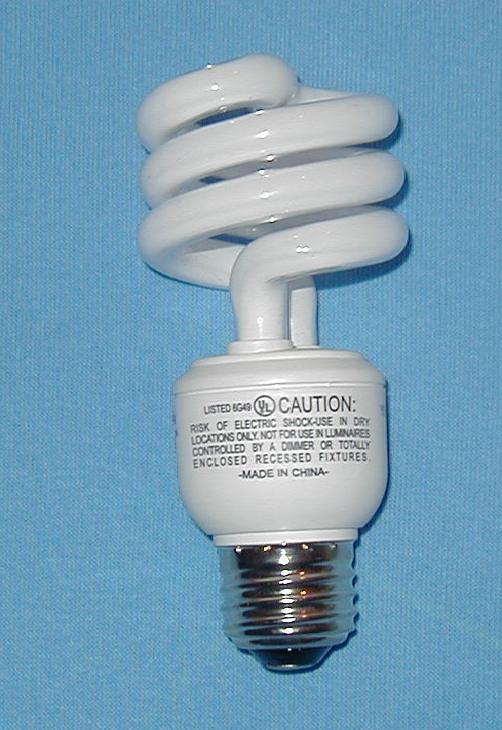The Oregon Senate has passed a bill limiting the amount of mercury allowed in compact fluorescent light bulbs that can be sold or distributed in the state. The Senate passed the bill on Feb. 15 by a vote of 21-8, with one member not voting.
Agreement on Common Bulbs
“It came about through negotiations with the industry for some of the more common consumer bulbs,” said Scott Klag, a senior planner for Metro, an elected regional government body for the Portland area.
The bill, SB 1512, creates very specific standards for compact fluorescent light bulbs, otherwise known as CFLs. Mercury levels cannot exceed 4 milligrams for “screw-based compact fluorescent lamps less than 25 watts,” and 5 milligrams for “compact fluorescent lamps equal to or more than 25 watts and less than 40 watts.”
Consumers will be most affected by “the compact fluorescents with the swirly top,” for which “the limit would be 4 milligrams per lamp,” Abby Boudouris, a solid waste policy analyst with the state’s Department of Environmental Quality, told Environment & Climate News.
Dropping Fees Allowed Passage
This isn’t the first time the Oregon legislature has attempted to impose limits on mercury levels in CFLs. Earlier provisions, however, were more restrictive.
One failed 2011 bill, for example, would have made it illegal to dispose of the CFLs in landfills. The 2011 bill would also have imposed fees on manufacturers for recycling the CFLs. Those fees would likely have been passed on to consumers, leading to higher prices. The recycling fees were stripped from SB 1512, which led to greater support for the bill, Boudouris said.
“It really came down to just coming up with the levels of mercury and finding the scope that industry could live with,” she said.
Successful Voluntary Standards
Mark Kohorst, a senior manager of Environment, Health, and Safety at the National Electrical Manufacturers Association (NEMA), says industry has been reducing mercury levels for years in CFLs and is on board with the latest Oregon legislation.
“The first thing to note,” he said, “is mercury is a necessary element in fluorescent bulbs. But the amount of mercury has been going dramatically down for decades. Industry has reduced the use of mercury by 90 percent by proactive, competitive efforts. Fluorescent lamps rely on mercury—they have to have it—but they’ve been relying on it less and less.”
NEMA introduced voluntary recommended levels for producers years ago, Kohorst notes. Companies have taken those recommendations and run with them, to the point where some manufacturers developed CFLs with mercury levels even lower than NEMA’s suggestions, he said.
The new rules in Oregon won’t lead to higher costs on consumers, Kohorst predicted.
“Not that I can see,” Kohorst said of the potential for higher prices. “We ensured we were setting thresholds we could meet. This is a very, very proactive industry when it comes to the issue of mercury in lamps.”
Cheryl Chumley ([email protected]) writes from northern Virginia.




